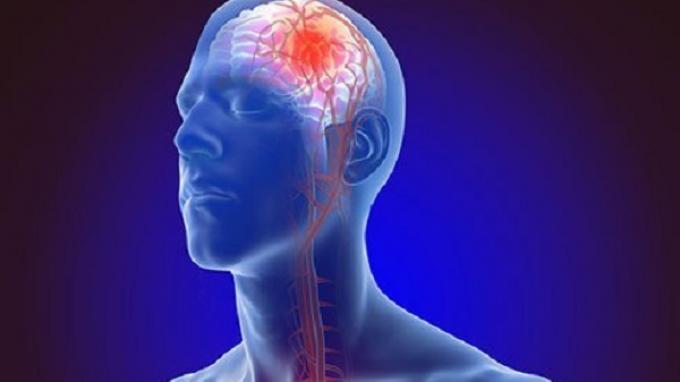A Transient Ischemic Attack (TIA), also known as a “mini-stroke,” may actually be a warning sign for a future stroke. We asked Chris Streib, MD, MS, Cerebrovascular Director at M Health Fairview, for more information.
A stroke is a crippling and life-altering event. It frequently strikes without warning and can cause permanent brain damage.
However, in approximately 12% of cases, there is a warning in the form of a transient ischemic attack, or TIA. A TIA, also known as a “mini-stroke,” is a temporary blockage of blood flow to the brain that is similar to a stroke. In terms of signs and symptoms, TIAs resemble strokes, but they are only temporary. To put it another way,
They do, however, serve as a warning sign that a person is in danger of having a major stroke and should seek immediate medical attention. According to the Centers for Disease Control and Prevention, one person dies from a stroke every four minutes in the United States, and stroke is a leading cause of long-term disability.
We asked Christopher Streib, MD, MS, Cerebrovascular Director at M Health Fairview, to tell us five things we should know about TIAs and how seeking treatment right away can help prevent a catastrophic stroke.
A TIA has the appearance and feel of a stroke but causes no permanent damage.
A TIA, like a stroke, occurs when a blood vessel blockage prevents blood from flowing to part of the brain. Unlike a stroke, TIA symptoms do not last long and usually resolve within 24 hours. A TIA does not cause permanent brain damage or long-term neurologic problems. It does, however, share many of the same signs and symptoms as a stroke.
A person suffering from a TIA may experience sudden weakness or numbness on one side of the body, slurred speech, difficulty seeing or talking, and confusion. The individual may have a combination of these symptoms at the same time.
“The initial symptoms of a stroke and a transient ischemic attack are indistinguishable.” “If you or someone you know has a stroke or TIA, go to the hospital right away, even if the symptoms are minor,” Streib advised. “You cannot always predict whether a person will improve or deteriorate, and you want all treatment options readily available.”
It’s a red flag, not a “mini-stroke.”
A TIA is commonly referred to as a “mini-stroke,” but this term, according to Streib, is misleading. TIAs are not always minor; symptoms can be quite severe, even if there is no permanent damage to the brain. It’s also critical to recognize a TIA as a warning sign because it frequently precedes a full stroke.
According to Streib, a person who has a TIA has a 10-20% chance of having a full stroke within seven days, depending on the cause. According to the American Stroke Association, 9 to 17% of people who have a TIA will have a stroke within 90 days. Patients can significantly reduce their risk if they seek appropriate care.
“People who have TIAs are actually very fortunate in some ways.” “It’s a warning that they’re at high risk of having a stroke, which could result in permanent deficits,” Streib explained. “They have the opportunity to make immediate lifestyle and medication changes to lower their risk of having a stroke.”
Learn more about our stroke treatment and services.
Get adequate follow-up care right away.
A person who has had a TIA must seek proper follow-up care immediately after the episode to significantly reduce the risk of stroke.
Streib recommends that all patients visit an emergency room during or immediately after a TIA for brain and blood vessel imaging. These scans can provide patients and providers with information about the cause of their TIA as well as their immediate stroke risk. Scans also assist them in developing a treatment plan. Furthermore, bleeding in the brain can sometimes mimic TIA and necessitate a completely different treatment.
When it comes to TIAs, seeking care at an emergency room is preferable to making an appointment with a primary care doctor, according to Streib, because ordering tests and interpreting results can take much longer in the outpatient setting. For some, that may be too late to prevent another stroke.
M Health Fairview is currently testing dedicated TIA clinics within our hospitals, where TIA patients are evaluated in the emergency department by the stroke team. Many TIA patients can be discharged home for clinic follow-up within 48 to 96 hours if a TIA is confirmed on evaluation and scans. These clinics are currently available at M Health Fairview Ridges and M Health Fairview Southdale. Our ambition is to grow.
“Being discharged from the ED should not give you a false sense of security about TIA,” Streib says. “The emergency department evaluation and follow-up testing are quite intensive.” Before any TIA patient is cleared to leave, we review all brain and blood vessel scans, optimize medications that thin the blood, lower cholesterol, control blood pressure, and order all necessary outpatient testing.”
Patients who are sent home are seen in clinic within 48 to 96 hours to follow up on their test results and to fine-tune their medications. Patients who are at high risk of having a stroke, on the other hand, are admitted to the hospital for additional medical or surgical treatment, such as the removal of cholesterol-related blockages in the neck, a procedure known asDetermine the cause and implement lifestyle changes.
Following immediate medical attention for a TIA, Streib recommends working with a specialist to develop a long-term health plan to reduce the ongoing risk of a stroke, particularly if the cause of the TIA is unknown. Stroke specialists may employ novel treatment options as well as long-term testing methods.
“Patients must see an expert,” said Streib. “Stroke prevention is based on treating the specific underlying risk factors of the patient.” Some of these risk factors are not immediately apparent and may necessitate months or years of diagnostic testing. A stroke specialist is best suited to determining the cause and assisting a patient in taking preventative measures. (*)





